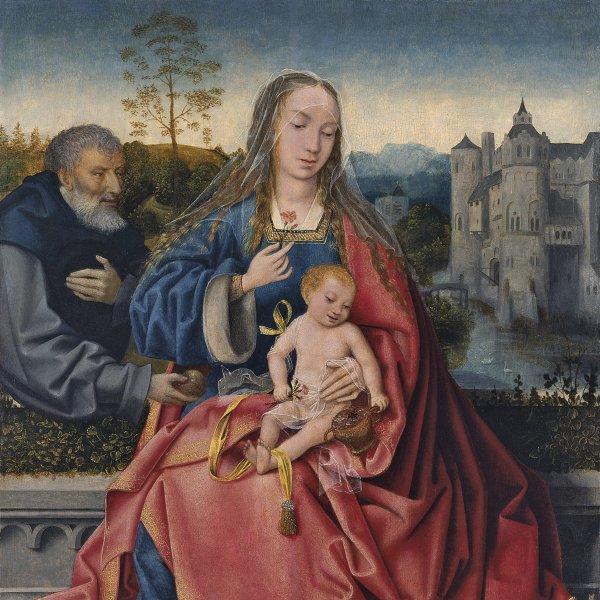Master of Frankfurt
This Netherlandish painter was active in Antwerp between 1490 and 1520. The date of his birth in 1460 has been established on the basis of an inscription on the frame of the Self-portrait with the Artist’s Wife (Koninklijk Museum voor Schone Kunsten, Antwerp), in which the artist recorded the date of execution and his age at that date. The Master of Frankfurt received two commissions from the city of Frankfurt, The Holy Kinship (Historisches Museum, Frankfurt) of 1505, painted for the Dominican church, and The Crucifixion (Städelsches Kunstinstitut und Städtische Galerie, Frankfurt) of 1504, commissioned by the Humbracht gallery, one of the leading patrician families in the city. The Master of Frankfurt was previously considered to be a German painter until Friedländer defined his style as falling within the Flemish tradition. The latest studies on the artist have attempted to identify him as Hendrik van Wueluwe, a master active in Antwerp between 1483 and 1533, the year of his death. According to surviving documents Van Wueluwe was a prestigious artist who was dean of the painters’ guild on six occasions and had a workshop with various apprentices. He may have been born in Woluwe, the city where Van der Goes spent the last years of his life.
Around fifty works have been attributed to the Master of Frankfurt. His traditional, conservative style reveals the marked influence of 15th-century Netherlandish painting, in particular that of Rogier van der Weyden, Robert Campin and Hugo van der Goes, whose compositions and figures he borrowed. His finest works are a group of small panels executed between 1510 and 1520, most of them portraits or depictions of the Virgin and Child. No work by the artist or document relating to him is known after 1520.





